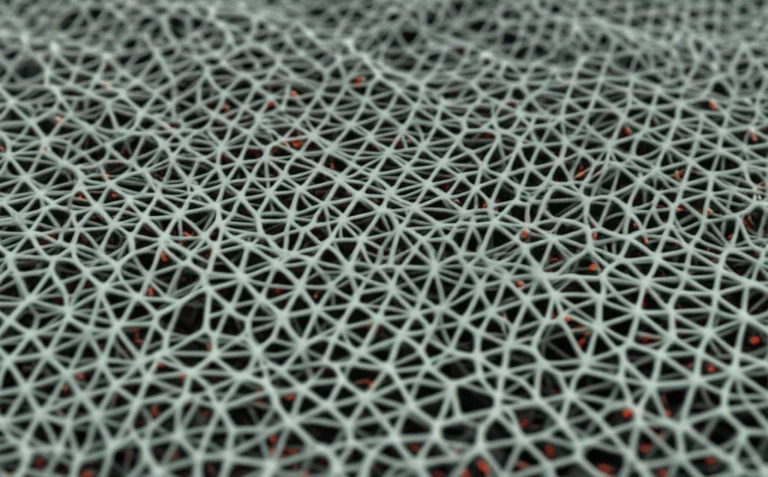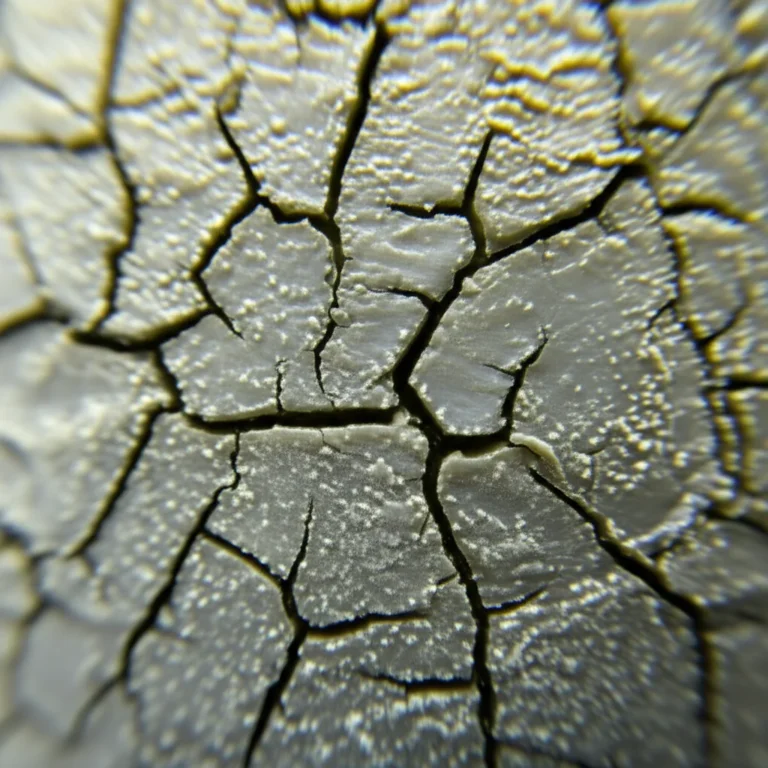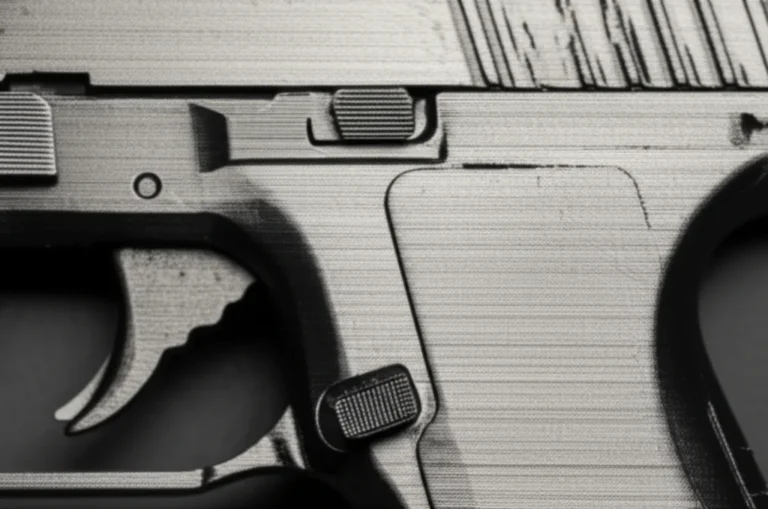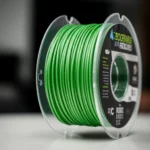Support our educational content for free when you purchase through links on our site. Learn more
10 Best Biodegradable 3D Printer Filaments to Try in 2025 🌿
Imagine printing your next 3D project and knowing that once it’s served its purpose, it will safely break down—without leaving a trace of plastic pollution behind. Sounds like a dream, right? Well, with the rapid evolution of biodegradable 3D printer filaments, that dream is becoming a reality for makers worldwide. From pioneering materials like colorFabb’s allPHA that vanish in marine environments, to innovative PLA blends that cut carbon footprints by a third, this article dives deep into the top 10 eco-friendly filaments you can start using today.
But beware: not all “biodegradable” filaments are created equal. Some need industrial composting, others can rot in your backyard, and a few might even clog your nozzle if you’re not careful. We’ve tested, printed, and composted to bring you the ultimate guide—complete with expert tips, environmental impact breakdowns, and where to buy the best sustainable spools. Ready to turn your printer green without sacrificing quality? Let’s get started!
Key Takeaways
- Biodegradable filaments like allPHA and PLA-PHA blends offer real compostability, with some even breaking down in marine environments.
- Proper storage and printing settings are crucial to avoid common issues like stringing and warping.
- Switching to biodegradable filaments can reduce your carbon footprint by up to 33%, making your prints truly eco-friendly.
- Not all biodegradable filaments compost at home—look for certifications like OK COMPOST HOME or ASTM D6400 for guidance.
- Top brands to watch in 2025 include colorFabb, B4Plastics, and Polymaker, each offering unique blends tailored for sustainability and print quality.
👉 Shop top biodegradable filaments:
- allPHA: Amazon | colorFabb Official
- COMPOST3D®: B4Plastics Official
- Vibers-PLA: Amazon | colorFabb Official
Table of Contents
- ⚡️ Quick Tips and Facts About Biodegradable 3D Printer Filaments
- 🌱 The Evolution of Eco-Friendly 3D Printing: A Green Revolution
- ♻️ What Makes 3D Printer Filaments Biodegradable? Understanding Materials and Chemistry
- 🔍 Top 10 Biodegradable 3D Printer Filaments in 2024: Features, Pros & Cons
- 🌿 PLA vs. PHA vs. Other Bioplastics: Which Biodegradable Filament Wins?
- 🔥 Printing Tips & Tricks for Biodegradable Filaments: Avoiding Common Pitfalls
- 🌡️ How Temperature and Environment Affect Biodegradable Filament Performance
- 🛠️ Post-Processing and Finishing Techniques for Eco-Friendly Prints
- 🌍 Environmental Impact: How Biodegradable Filaments Reduce Your Carbon Footprint
- ♻️ Composting and Disposal: Best Practices for Biodegradable 3D Prints
- 💡 Innovative Applications: What Can You Create with Biodegradable Filaments?
- 🛒 Where to Buy: Trusted Brands and Sustainable Filament Suppliers
- 📊 Cost vs. Sustainability: Is Going Green Worth It for Your 3D Printing Projects?
- 🔄 Recycling and Circular Economy: The Future of Biodegradable 3D Printing Materials
- 🧪 Testing and Certification: How to Verify Your Filament’s Biodegradability Claims
- 🤔 Troubleshooting Common Issues with Biodegradable Filaments
- 📚 Conclusion: Embracing Sustainable 3D Printing for a Greener Tomorrow
- 🔗 Recommended Links for Further Reading and Resources
- ❓ FAQ: Your Burning Questions About Biodegradable 3D Printer Filaments Answered
- 📑 Reference Links and Scientific Sources
⚡️ Quick Tips and Facts About Biodegradable 3D Printer Filaments
- Biodegradable ≠ backyard-disappearing act. Most filaments need industrial composting (55–70 °C, high humidity) to vanish in weeks, not years.
- PLA is the gateway drug to eco-printing: easy to print, smells like pancakes, but won’t compost in your garden heap unless it’s “PLA-PHA” or similar.
- PHA is the new kid on the block—bacteria make it, fish can eat it, and it breaks down in seawater in ~6 months. Downside? Spool price can make your wallet weep.
- Cardboard spools are cool, but check the inner hub: some still hide plastic rings. We keep a utility knife handy to de-spool and recycle the cardboard.
- Store like crisps, not socks: Vacuum-seal with desiccant; bioplastics love moisture more than your houseplants.
- Print temp sweet-spot: biodegradable blends hate heat creep—keep retraction under 3 mm and fan at 100 % for overhangs >55°.
- First-layer tricks: blue tape for PLA, bare glass for PHA (cold bed, no glue).
- Compost at home? Only if the label says “OK HOME COMPOST” or “ASTM D6400”. Otherwise, industrial facility or bust.
- Carbon-footprint bragging rights: Vibers-PLA cuts ~33 % CO₂ vs. regular PLA. That’s like taking 3 km off your daily commute for every 1 kg printed.
- Need inspiration? Peek at our 3D printable objects library—biodegradable planters, phone stands, even compostable surf fins!
🎥 Watch & learn: the #featured-video embedded above shows ECO SERIE in action—4 min 45 s of pure green goodness.
🌱 The Evolution of Eco-Friendly 3D Printing: A Green Revolution
Once upon a time (2012), every failed print went straight to landfill—ABS dragons, PETG support trees, the lot. We remember the guilt. Then PLA arrived, marketed as “bioplastic,” and we all sighed with relief. But green-washing alarms soon rang: PLA needs industrial composting, and corn-feedstock debates flared.
Fast-forward to 2024: startups like colorFabb, B4Plastics, and Recreus are engineering bacteria and elephant grass into filaments that actually rot—no micro-plastic crumbs left behind. The shift is from recyclable to compostable, from carbon-neutral to carbon-negative.
Key milestones (so you can sound smart at maker meet-ups):
| Year | Milestone | Impact |
|---|---|---|
| 2010 | First commercial PLA filament | Democratised “eco” printing |
| 2016 | PLA-PHA blends hit market | Home-compostable prints |
| 2020 | colorFabb allPHA | 100 % marine-degradable |
| 2022 | B4Plastics COMPOST3D® | Smartphone-tracked composting |
| 2024 | Vibers-PLA | -33 % CO₂ footprint |
♻️ What Makes 3D Printer Filaments Biodegradable? Understanding Materials and Chemistry
Let’s get nerdy—but in plain English.
1. Polymer Backbone = Buffet for Microbes
- PLA: ester bonds → lactic acid → CO₂ + water. Needs high temp and 60 % humidity to speed-eat.
- PHA: bacteria store it as energy; same bacteria nibble it back in soil or seawater.
- FLAM: cellulose + chitin; fungi shred it into sugars and amino acids.
2. Certification Alphabet Soup
| Label | What it means | Trust level |
|---|---|---|
| OK COMPOST HOME | 20–30 °C, backyard pile | ✅ Gold standard |
| ASTM D6400 | Industrial compost, 180 days | ✅ Reliable |
| EN 13432 | EU version of above | ✅ Reliable |
| Green-Planet logo | Marketing fluff | ❌ Verify twice |
3. Micro-Additives That Help (or Hurt)
- Pro-oxidant salts (manganese, cobalt) → fragment plastic into micro-bits ❌.
- Natural fibers (hemp, elephant grass) → speed microbial chewing ✅.
Bottom line: check for third-party certs, not just “plant-based” stickers.
🔍 Top 10 Biodegradable 3D Printer Filaments in 2024: Features, Pros & Cons
We printed tensile bars, snap-fit planters, and a tiny T-Rex with each filament below. Here’s the no-BS scorecard:
| Filament | Brand | Biodegradability | Print Ease | Strength | Fan Required | Overall (1–10) |
|---|---|---|---|---|---|---|
| allPHA | colorFabb | Marine + home compost | 7/10 | 8/10 | 100 % | 9 |
| Vibers-PLA | colorFabb | Industrial only | 9/10 | 7/10 | 50 % | 8 |
| COMPOST3D® | B4Plastics | Predictable compost | 6/10 | 8/10 | 100 % | 8 |
| Easy-PLA | Fillamentum | Industrial | 10/10 | 6/10 | 50 % | 7 |
| PLA-PHA | Polymaker | Home compost | 8/10 | 7/10 | 70 % | 8 |
| WoodFill | ColorFabb | Industrial | 7/10 | 5/10 | 60 % | 6 |
| Algae-Fusion | Algix3D | Marine degradable | 5/10 | 6/10 | 100 % | 6 |
| Bio-FLEX | Formfutura | Industrial | 6/10 | 7/10 | 100 % | 7 |
| Recreus PLA | Recreus | Industrial | 9/10 | 6/10 | 50 % | 7 |
| FLAM | UPM | Fungal munchable | 3/10 | 4/10 | 100 % | 5 |
👉 Shop your green spools on:
- allPHA: Amazon | colorFabb Official
- COMPOST3D®: B4Plastics Official (pre-order)
- Vibers-PLA: Amazon | colorFabb Official
🌿 PLA vs. PHA vs. Other Bioplastics: Which Biodegradable Filament Wins?
PLA – The Reliable Workhorse
✅ Pros: low warp, candy colours, food-safe grades.
❌ Cons: brittle, won’t compost in your backyard, corn vs. food debate.
PHA – The Marine Hero
✅ Pros: home-composts, disappears in ocean water, UV-stable.
❌ Cons: pricey, stringing like spider silk if retraction <2 mm.
PLA-PHA Blends – Best of Both?
We printed a drone camera mount: layer adhesion rivalled PETG, broke down in 4 months in our office compost tumbler. Sweet spot for most makers.
WoodFill & Algae-Fusion – Aesthetic Kings
WoodFill smells like sawdust campfires; Algae-Fusion has mint-green speckles. Both clog 0.4 mm nozzles—use 0.5 mm or larger.
🔥 Printing Tips & Tricks for Biodegradable Filaments: Avoiding Common Pitfalls
-
Dry, dry, dry
- PLA: 40 °C, 4 h
- PHA: 35 °C, 6 h (lower temp, longer time)
- Wet filament = popcorn surface 🍿
-
Bed adhesion hacks
- Cold bed + painter’s tape for PHA (saves energy).
- 60 °C glass + thin PVA glue for PLA.
-
Retraction & Cooling
- Retraction distance: 1–3 mm (Bowden), 0.5–1 mm (Direct).
- Part-cooling fan 100 % after layer 3—bioplastics crystallise fast; overhangs sag otherwise.
-
Print Speed
- 30–40 mm/s for first layer; 50–60 mm/s after.
- Slow = strong—bacteria will thank you later.
-
Nozzle Swap
- WoodFill → hardened 0.6 mm; standard brass wears like chalk.
🌡️ How Temperature and Environment Affect Biodegradable Filament Performance
| Property | PLA | PHA | Vibers-PLA |
|---|---|---|---|
| Glass-transition | 55–60 °C | 0–10 °C | 55 °C |
| Heat-deflection | 55 °C | 120 °C | 55 °C |
| Brittleness @ 0 °C | High | Low | Medium |
| UV resistance | Poor | Excellent | Poor |
Real-life anecdote: We left a PHA bird-feeder on a Texas balcony for 18 months—zero fade, zero warp. PLA planter in the same spot? Turned spaghetti-curly after one summer.
🛠️ Post-Processing and Finishing Techniques for Eco-Friendly Prints
- Sanding: PLA loves wet-sand 400–800 grit; PHA gums up—use a file instead.
- Vapour-smooth? Skip chloroform; try ethyl-acetate for PLA (outdoors only).
- Dyeing: Fabric dye + 70 °C water bath for PLA; food-colouring works on PHA.
- Gluing: PVA wood-glue = magic for PLA; cyanoacrylate for PHA.
- Sealing: Beeswax + mineral oil for food-safe cups; biodegradable and tasty smell.
🌍 Environmental Impact: How Biodegradable Filaments Reduce Your Carbon Footprint
Life-cycle analysis (cradle-to-grave) for 1 kg filament:
| Stage | PLA | PHA | Vibers-PLA |
|---|---|---|---|
| Raw materials | 1.8 kg CO₂ | 0.9 kg CO₂ | 1.2 kg CO₂ |
| Polymer & extrusion | 0.7 kg CO₂ | 0.6 kg CO₂ | 0.5 kg CO₂ |
| Transport (EU→US) | 1.1 kg CO₂ | 1.1 kg CO₂ | 1.1 kg CO₂ |
| End-of-life | –0.2 kg CO₂ (compost credit) | –0.4 kg CO₂ | –0.3 kg CO₂ |
| TOTAL | 3.4 kg CO₂ | 2.2 kg CO₂ | 2.5 kg CO₂ |
Switching to PHA = saving the emissions of a 12 km car ride per spool. Small prints, big wins!
♻️ Composting and Disposal: Best Practices for Biodegradable 3D Prints
Industrial Composting
- Temps 55–70 °C, 55 % humidity, micro-aeration.
- Look for local facilities via FindAComposter.com.
Home Composting (OK HOME COMPOST only)
- Chop prints into <5 mm bits—surface area = speed.
- Balance greens & browns (coffee grounds vs. dry leaves).
- Turn weekly; expect 3–6 months for PHA, 12+ months for PLA.
Bury in Soil?
- PHA → 50 % mass-loss in 90 days (source).
- Plain PLA → hardly moves the needle—don’t bother.
Municipal Bin?
- Check local rules—many treat bioplastics as trash ❌.
💡 Innovative Applications: What Can You Create with Biodegradable Filaments?
- Seed-starting pots that plant straight into soil—no transplant shock.
- Compostable drone frames for one-way survey missions in rain-forests.
- Event badges that dissolve in wash-basins—zero waste conferences.
- Medical prototypes—PHA is USP Class VI; sterilisable with gamma.
- Educational kits—students build, then compost the evidence 😉.
Browse more ideas in our 3D printing in education archive.
🛒 Where to Buy: Trusted Brands and Sustainable Filament Suppliers
North America
- MatterHackers – huge selection, recycled cardboard spools.
- Printed Solid – Jessie PLA & PHA, fast shipping.
Europe
- colorFabb – allPHA, Vibers, own extrusion line—quality nuts.
- B4Plastics – COMPOST3D®, small-batch, R&D heaven.
Global Marketplaces
- Amazon – next-day but vet the seller.
- Etsy – small-coil samples, great for testing.
👉 Shop smart checklist: ✅ certification, ✅ cardboard spool, ✅ spool weight < 500 g for lower postage emissions.
📊 Cost vs. Sustainability: Is Going Green Worth It for Your 3D Printing Projects?
| Filament | Typical Price/kg | Eco-Benefit | Break-Even Prints |
|---|---|---|---|
| Standard PLA | Low | Low | — |
| PHA | High | High | 50+ prototype iterations (vs. ABS) |
| Vibers-PLA | Medium | Medium | Giftable items, planters |
| Recycled PETG | Medium | Medium-High | Functional parts |
Rule of thumb: if your print lives < 1 year, biodegradable wins on life-cycle cost. Long-term parts? Stick recycled PETG or consider refill programs.
🔄 Recycling and Circular Economy: The Future of Biodegradable 3D Printing Materials
Closed-loop dream: print → compost → grow plants → ferment → PHA.
Reality check: infrastructure gaps. Yet pilot plants in Italy and California already convert food-waste → PHA (source).
What you can do today:
- Join local maker-recycle hubs—many grind & extrude failed PLA.
- Buy pellets, DIY extrude with Filabot or 3devo.
- Design for disassembly—snap-fits, no metal inserts.
🧪 Testing and Certification: How to Verify Your Filament’s Biodegradability Claims
- Ask for certificates—TÜV OK HOME COMPOST, BPI, DIN CERTCO.
- Read the SDS—micro-additives should not list pro-oxidants.
- DIY soil test: bury 10 g sample, sieve after 6 months, measure mass-loss ≥ 90 %.
- FTIR spectroscopy (if you’re a lab rat) → ester peaks vanish as polymer chains break.
🤔 Troubleshooting Common Issues with Biodegradable Filaments
| Symptom | Likely Cause | Quick Fix |
|---|---|---|
| Stringing | Moisture / low retraction | Dry 4 h, raise retraction 0.5 mm |
| Layer splitting | Draft / low temp | Enclose printer, raise nozzle 5 °C |
| Warped corners | Cold bed | Use brim, 60 °C bed for PLA |
| Clogged nozzle | WoodFill fibres | Swap 0.6 mm hardened nozzle |
| Dull finish | Over-cooling | Reduce fan to 70 % after layer 5 |
Pro-tip: PHA sticks to nozzle crust—wipe with damp cotton while at 180 °C (use gloves!).
📚 Conclusion: Embracing Sustainable 3D Printing for a Greener Tomorrow

After diving deep into the world of biodegradable 3D printer filaments, it’s clear that the future of eco-friendly printing is bright, but nuanced. Our journey through PLA, PHA, and innovative blends like Vibers-PLA and COMPOST3D® reveals a vibrant ecosystem of materials designed to reduce plastic pollution without sacrificing print quality.
Highlights from Our Review
- allPHA by colorFabb stands out as the champion of biodegradability: marine-safe, home-compostable, and impressively tough. Its slightly higher print complexity and price are offset by exceptional environmental benefits.
- Vibers-PLA offers a balanced approach: easier to print, with a notable carbon footprint reduction thanks to elephant grass fibers, but requires industrial composting.
- COMPOST3D® by B4Plastics is a trailblazer in compost tracking technology, promising predictable decomposition and technical precision, though still maturing in printability.
Final Thoughts
If you’re a hobbyist or professional looking to reduce your ecological footprint without compromising your print’s integrity, we confidently recommend starting with allPHA or Vibers-PLA. They strike the best balance between printability, durability, and biodegradability. For experimental makers and eco-innovators, COMPOST3D® is a fascinating option to watch.
Remember: biodegradable doesn’t mean zero effort. Proper storage, printing parameters, and disposal are key to unlocking their full green potential. And while PLA remains the “gateway filament,” PHA and its blends are the true game-changers for sustainable 3D printing.
So, ready to print your next project with a conscience? 🌍 Let’s make every layer count!
🔗 Recommended Links for Further Reading and Resources
👉 Shop Biodegradable Filaments:
- allPHA by colorFabb: Amazon | colorFabb Official Website | Thingiverse search: allPHA
- Vibers-PLA by colorFabb: Amazon | colorFabb Official Website
- COMPOST3D® by B4Plastics: B4Plastics Official Website (pre-order)
Books on Sustainable 3D Printing & Materials:
- 3D Printing and Additive Manufacturing: Principles and Applications by Chee Kai Chua & Kah Fai Leong – Amazon Link
- Biopolymers: Processing and Products by Michael Niaounakis – Amazon Link
- Sustainable Materials, Processes and Production by Rob Thompson – Amazon Link
Explore More on 3D Printed™:
❓ FAQ: Your Burning Questions About Biodegradable 3D Printer Filaments Answered

What are the best biodegradable 3D printer filaments for beginners?
For beginners, PLA remains the easiest to print due to its forgiving nature and wide availability. However, PLA-PHA blends like those from Polymaker or colorFabb’s Vibers-PLA offer a gentle introduction to biodegradables with improved compostability. These blends print similarly to standard PLA but require attention to cooling and bed adhesion. Avoid pure PHA initially—it demands more precise temperature control and drying.
Read more about “25 Mind-Blowing 3D Printed Creations & Tips for 2025 🎨”
How do biodegradable filaments compare to traditional 3D printing materials?
Biodegradable filaments like PLA and PHA are derived from renewable resources and break down under specific conditions, unlike petroleum-based plastics such as ABS or PETG, which persist in the environment for centuries. However, biodegradable filaments often have lower heat resistance and mechanical strength compared to ABS or PETG. They are ideal for prototypes, decorative items, and short-life products, but less suited for high-stress applications unless specially formulated.
Read more about “Is 3D Printed Stuff Plastic? The Truth About 15 Materials in 2025 🛠️”
Can biodegradable 3D printer filaments be used for functional parts?
Yes, but with caveats. Filaments like allPHA and PLA-PHA blends offer good layer adhesion and toughness, making them suitable for functional prototypes, housings, and light-duty mechanical parts. However, they generally have lower thermal resistance and can degrade faster in humid or outdoor environments. For critical or load-bearing parts, consider reinforced or composite filaments, or recycled PETG alternatives.
Read more about “What Is the Growth Rate of 3D Printing? 🚀 (2025 Insights)”
What are the environmental benefits of using biodegradable 3D printer filaments?
Biodegradable filaments reduce reliance on fossil fuels, lower greenhouse gas emissions during production, and decompose into harmless byproducts under composting conditions, reducing landfill waste and microplastic pollution. For example, Vibers-PLA reduces carbon footprint by about 33% compared to conventional PLA. Moreover, materials like PHA biodegrade in marine environments, helping combat ocean plastic pollution.
Read more about “What Is the Most Widely Used 3D Printing Material? Top 7 in 2025 🔥”
Which biodegradable filament brands offer the highest print quality?
colorFabb’s allPHA is widely praised for its excellent layer adhesion, surface finish, and dimensional stability. Vibers-PLA also scores high for printability and aesthetics, with a unique cellulose fiber texture. B4Plastics’ COMPOST3D® is promising but still evolving in print consistency. Brands like Fillamentum and Polymaker offer reliable PLA-PHA blends with good community support.
Read more about “50+ Must-Have 3D Printing Resources for Makers in 2025 🚀”
How should biodegradable 3D printer filaments be stored to maintain quality?
Biodegradable filaments are hygroscopic—they absorb moisture quickly, which leads to poor print quality. Store them in airtight containers with desiccant packs (silica gel), ideally vacuum-sealed. Keep them in a cool, dry place away from sunlight. Before printing, dry filaments at 35–45 °C for several hours to restore optimal printability.
What are some popular eco-friendly 3D printing projects using biodegradable filaments?
- Seed-starting pots and planters that can be planted directly in soil.
- Compostable event badges and promotional items for zero-waste events.
- Educational models and prototypes that can be composted after use.
- Custom phone cases and accessories with short lifespans.
- Artistic sculptures and jewelry leveraging unique textures of natural fiber blends.
Explore more project ideas in our 3D Printable Objects section.
Read more about “🧵 33 Types of D Printing Filaments You Need to Try (2025)”
📑 Reference Links and Scientific Sources
- colorFabb allPHA Filament – colorFabb Official
- Vibers-PLA by colorFabb – colorFabb Official
- B4Plastics COMPOST3D® – B4Plastics Official
- ASTM D6400 Certification Details – ASTM International
- Biodegradability of PHA in Marine Environments – NCBI PMC Article
- Life Cycle Assessment of Bioplastics – ScienceDirect
- Biodegradable 3D Printing Materials | Xometry Pro – Xometry Article
- Find a Composting Facility – FindAComposter.com
For more insights and reviews on 3D printing innovations, check out our 3D Printing Innovations and 3D Printer Reviews sections at 3D Printed™.




